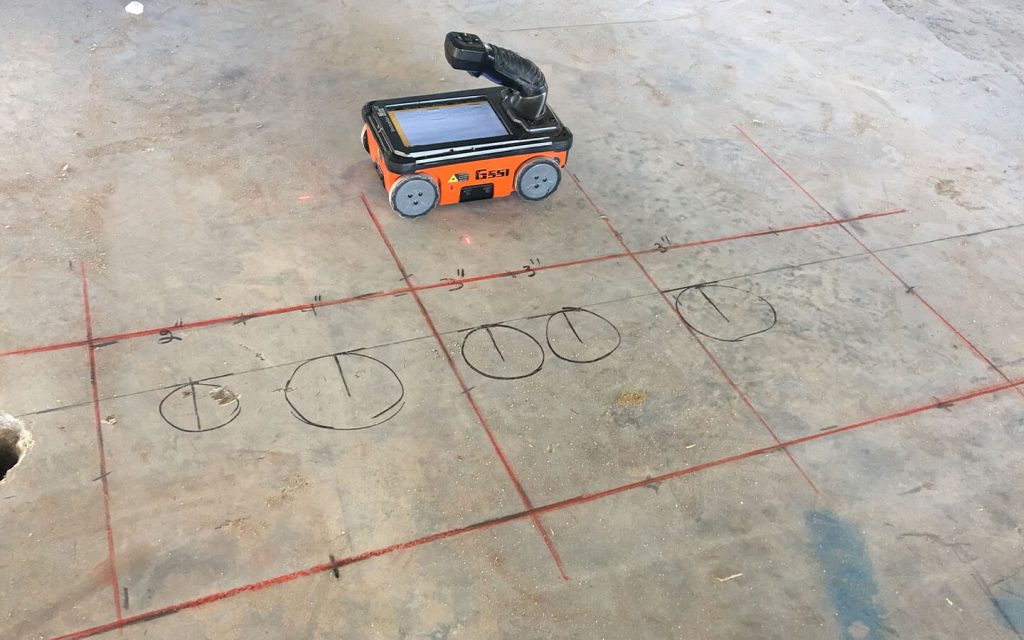Accuracy and Precision in Concrete Scanning Solutions
Accuracy and Precision in Concrete Scanning Solutions
Blog Article
Past the Surface Area: Leveraging Advanced Concrete Scanning Techniques for Unmatched Accuracy and Understanding
Advanced concrete scanning strategies have arised as important devices in this quest, supplying a peek under the surface to introduce a globe of critical insights. By utilizing advanced modern technologies, experts can discover abnormalities, examine the condition of concrete structures, and make educated decisions that shape the program of jobs.
Importance of Advanced Concrete Scanning
The significance of using innovative concrete scanning methods depends on the unrivaled accuracy they provide for identifying sub-surface abnormalities and ensuring structural integrity. By using advanced technologies such as ground-penetrating radar (GPR), electromagnetic induction, and advanced sonar imaging, construction experts can dive below the surface of concrete frameworks with a degree of precision that far goes beyond conventional assessment methods. Concrete Scanning. These strategies enable the identification of hidden hazards like rebar corrosion, voids, channels, or post-tension cords that might jeopardize the stability and safety and security of a structure with time
In addition, progressed concrete scanning supplies important understandings into the overall condition of a concrete component without the demand for intrusive measures, decreasing the risk of creating damages during the assessment procedure. The ability to pinpoint the specific place and depth of potential problems enables targeted repairs and upkeep, ultimately lengthening the life expectancy of the framework and optimizing its efficiency. Basically, the significance of advanced concrete scanning can not be overemphasized in the world of construction and facilities maintenance, where accuracy and reliability are paramount.
Kinds Of Cutting-Edge Technologies

Abnormalities and Issue Discovery

Along with GPR, concrete scanning techniques like thermography and impact-echo testing are also efficient in detecting defects and abnormalities. Thermography uses infrared modern technology to recognize variants in surface area temperature level, showing possible locations of problem such as delamination or moisture ingress. On the other hand, impact-echo testing entails assessing acoustic responses to detect gaps, cracks, and other defects within the concrete. By leveraging these advanced strategies, specialists can proactively resolve architectural concerns, making certain the long life and safety and security of concrete frameworks.
Assessing Concrete Problem
Exactly how can engineers properly examine the problem of concrete structures to ensure their long life and safety? Evaluating the concrete condition is a crucial facet of maintaining infrastructure honesty. Different innovative concrete scanning techniques are utilized for this purpose. Ground-penetrating radar (GPR) is generally utilized to analyze the interior framework of concrete, identifying spaces, splits, and various other anomalies that may compromise its stamina. Additionally, impact-echo testing can provide insights right into the thickness and stability of concrete aspects. Ultrasonic pulse velocity screening is an additional important approach for evaluating concrete high quality by gauging the speed of sound waves with the product.
Additionally, aesthetic evaluation stays a basic component of concrete condition assessment. Engineers aesthetically check out the surface for signs of degeneration, such as spalling, splitting, or staining. Incorporating non-destructive screening methods with Read More Here aesthetic examinations permits a thorough examination of concrete problem, enabling designers to recognize prospective issues early and implement timely upkeep or fixings. By leveraging these advanced techniques, engineers can make sure the long-term resilience and security of concrete frameworks.
Enhancing Decision-Making Processes
In the world of facilities management, maximizing decision-making processes is critical for ensuring the efficient maintenance and long life of concrete structures. Enhanced decision-making procedures in concrete management entail utilizing sophisticated scanning methods to gather in-depth data on the condition of structures. By leveraging modern technologies such as ground-penetrating radar and 3D imaging, stakeholders can make educated decisions pertaining to fixing, replacement, or support methods.
These progressed scanning methods give indispensable understandings into the interior make-up of concrete, identifying possible issues such as spaces, splits, or deterioration that may not show up externally. This level of in-depth details permits positive upkeep planning, lessening the danger of architectural failures and boosting the overall lifespan of concrete structures.
Furthermore, by integrating electronic paperwork and evaluation devices right into the decision-making procedure, stakeholders can track the advancement of concrete problems with time, making it possible for anticipating upkeep methods and optimizing resource allotment. Ultimately, the assimilation of sophisticated concrete scanning techniques improves decision-making processes by supplying unequaled precision, understanding, and performance in facilities administration.
Conclusion
To conclude, advanced concrete scanning techniques offer unrivaled precision and insight in spotting anomalies, defects, and examining the problem of concrete structures. By leveraging advanced modern technologies, decision-making processes can be improved, resulting in even more effective and enlightened solutions for keeping and fixing concrete infrastructure. These techniques play a crucial role his response in guaranteeing the security and durability of concrete structures, making them an essential device in the field of construction and design.
Moreover, progressed concrete scanning supplies indispensable insights right into the overall condition of a concrete element without the need for intrusive actions, lessening the risk of creating damage throughout the assessment process - Concrete Scanning. An additional innovative innovation is 3D X-ray scanning, which provides thorough images of the interior structure of concrete, providing valuable info without the demand for damaging screening. Additionally, Concrete Cover Meters are made use of to determine the density of concrete cover over support bars precisely. Improved decision-making procedures in concrete management include making use of sophisticated scanning strategies to gather in-depth data on the condition of frameworks.In conclusion, advanced concrete scanning methods supply unequaled precision and insight in Extra resources detecting abnormalities, problems, and examining the problem of concrete frameworks
Report this page